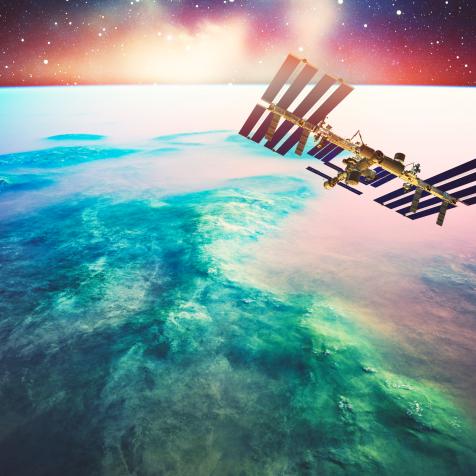
Christophe Lehenaff
Waste In Space: NASA's Lunar Loo Challenge
Would YOU like to design one of the next toilets used in space?
NASA is calling upon YOU to design a space toilet that will operate in microgravity and lunar gravity aboard an Artemis Lunar Lander. Artemis is NASA’s mission to return astronauts to the moon by 2024 using spacecraft built in partnership with privately-owned companies. When the first woman and next man land on the lunar surface, they will inevitably need to use the bathroom, just like everyone back on Earth does every day. NASA and HeroX are sponsoring a public competition to design the space toilet for the Artemis spacecraft.
Space toilets already exist, like the zero g one on the International Space Station, however this next generation concept is unique. It’s a lunar lander lavatory, which means it needs to function on the moon where gravity is only one sixth of Earth’s gravity. NASA wants the Lunar Loo to be simple and compact. Your idea, if selected, can play a role in establishing a habitable base on the moon!

NASA
The Waste and Hygiene Compartment, or toilet, on the International Space Station.
Submissions are now open until August 17 and separated into two age-based categories. The Technical category is for people ages 18 years and older. The Junior category is for those under the age of 18. The top 3 designs in the Technical category will share a $35,000 prize, while the top 3 participants under the Junior category will each receive public recognition and official NASA merchandise.
What Is It Like To Go To The Bathroom In Space?
The past history of toilets in space provides some interesting bathroom reading. They tend to not be as comfortable of an experience compared to the use of toilets here on Earth. It’s no secret that people, including astronauts, need to use the loo multiple times per day to relieve themselves of their own human waste.

NASA
Apollo Fecal Collection Bag
It does not come as a surprise that the astronauts were concerned about their bowel habits, considering the onboard facilities consisted of a plastic bag taped into place for use. The messy and unpleasant procedure would take at least 45 minutes.
Apollo astronauts did not have toilets. They bagged their human waste in bactericide and brought it home to Earth with them. Mechanisms for going to the bathroom consisted of cuffs, bags taped to astronaut’s bottoms, various types of baggies, and finally something called a “fecal containment system.” Clearly, going to the bathroom is no laughing matter. Thankfully when the Space Shuttle program arrived, a Disposable Absorption Containment Trunk was born alongside a Waste Collection System. It wasn’t easy to use but was deserving of being labeled a toilet. Present day, astronauts go to the bathroom aboard the ISS using a plate-sized toilet hole and a fan to vacuum away their excrement. There is a separate funnel for urine. Their waste gets stored in a plastic bag and eventually burns up in orbit on its way back to Earth in a cargo ship.
NASA is currently working on an updated Universal Waste Collection System for the International Space Station, but in the meantime, they need your help designing one for Artemis missions.
Will Your Toilet Be The Chosen One?
Click here to learn more about the challenge and submit your design. Don’t forget to follow the Toilet Design and Toilet Performance Specifications. “The global community of innovators provides valuable insight and expertise we might not have in-house,” said Steve Rader, deputy manager of the NASA Tournament Lab (NTL). “Challenges like this allow us to tap into that creative thinking and find unknown or undeveloped solutions.”


















